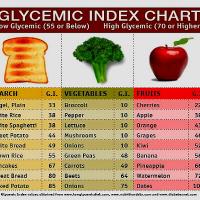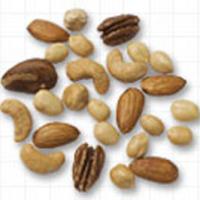Glycemic Impact Diet Secrets

The glycemic index just seems confusing. Is it? The glycemic index is a ranking of carbohydrates based on the rate they are broken down and subsequently affect blood glucose (sugar), the fuel used by the body’s cells for energy. In other words, the glycemic index (GI) measures how much a 50-gram portion of carbohydrate raises a person's blood-sugar levels compared with a control (that is, white bread or pure glucose).
The basics of the diet are similar to the South Beach Diet, The Zone, Sugar Busters, and to a lesser degree the Atkins Diet.
All meal plans on the Glycemic Impact Diet are made up from the following principles:
• Approximately 40% of calories are from unrefined, complex carbohydrates, including whole grains and whole grain breads and cereals, and whole pieces of fruit instead of juice.
• About 30% of calories are from lean protein (fish, chicken and the occasional beef and pork) with vegetarian options that include soy protein, tofu and textured vegetable protein.
• About 30% of calories are from healthy fats, including nuts, fatty fish, avocado and olive oil.
According to eDiets, being on the Glycemic Impact diet will allow you to enjoy low-Glycemic impact foods, unrefined complex carbohydrates with lean protein and healthy fats at every meal and snack. The Glycemic Impact Plan allows you to limit simple sugars while increasing fiber intake to help achieve stable blood sugars and avoid hunger.
They also suggest a sample menu plan:
Breakfast: Breakfast Egg and Cheese Burrito with Honeydew Melon
Lunch: Curried Turkey Salad with Walnuts and Flat Bread
Dinner: Foiled Fish with Couscous and Balsamic Tomatoes
Afternoon Snack: Yogurt with Raspberries and Almonds
Late-Night Snack: Mini Pita Pizza
-
Methods To Lose Weights By Following Best Diets
he best diets to lose weight would essentially consist of a controlle
-
Emotions and Low-Carb Diets
Whi
-
Mandarin Style Low Carb Spaghetti
1 3
-
High protein low carb diets - what you need to know
You can change your body to a fat burning machine by consum
-
News About Low Carb Foods-Stevia the All Natural Sweetener
Stevia is in the news now that Coca Cola is seeking its app
-
Low Carb Diets and Artificial Sweeteners
Sug
- DON'T MISS
- What is the Glycemic Index?
- Atkins Low Carb Diet Related Health Questions Answered
- Diet pills may suppress appetite, but low-carb nutrition and whole food supplements work far better
- Choose the Best Low-Carb Diet Books
- Pizza, Without the Guilt
- Low Carb Diets That Work- An Essential Key To Maintaining Your Goal Weight
- Methods To Lose Weights By Following Best Diets
- Diets -inquiries Into Preferences
- Atkins Buying Ideas
- Estonian cabbage cream soup




